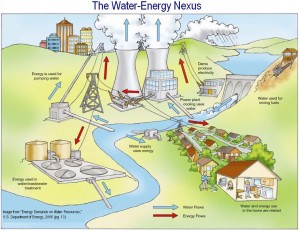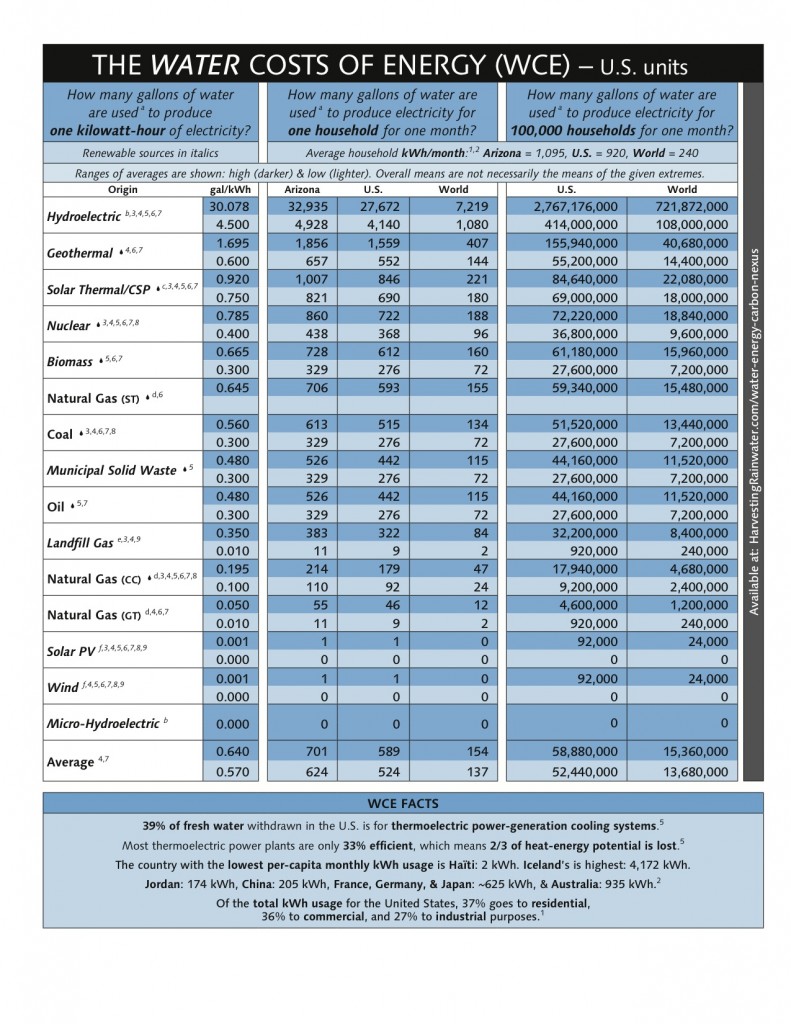The Water-Energy Nexus
Click image for larger view.
Editor’s Note: This piece is adapted from CleanTechnica.com. Go to the source for a more complete version and additional references. –Hardly Waite.
Did you know that it takes 3,000-6,300 gallons of water per year to power just one 60W incandescent light bulb? Now, I know that that must sound a little farfetched, but unfortunately it’s true. But how can this be, don’t light bulbs use electricity? In short, yes, but what most people don’t know is that we use large amounts of water to produce electricity. You see, electricity and water are connected through what is known as the energy-water nexus, and while that phrase may not mean anything to you at the moment, it will by the end of this article. So what exactly is the energy-water nexus, and why should you care?
The water-energy nexus is best understood as a connection between water and energy, however it goes much deeper than that. First, let’s look at the connection between the production of energy and water. The three most common ways we produce power today are coal, natural gas and nuclear power and all three of these require the use of water. Essentially these systems heat fresh water and turn it into steam, and that steam spins a turbine which creates energy. Curious just how much water these systems use? Click on the image below to see just how much water each of these systems needs to produce just 1 kWh of energy:
As you can see, supplying power to our homes requires a ton of water, but what about supplying them with water? Well, in short, it requires a ton of energy. You see, before water reaches your home it’s passed through a water treatment plant which ensures that it’s safe to drink and use in your home. After its been treated a series of electrical pumps will bring the water to your home where it will be used and then pumped back to another waste water treatment facility to be re-treated and sent back out. All the while, using energy which requires water to create it. So what does this mean to you as both an energy and water consumer? Take a look at your latest water bill, odds are you’ll find an electrical charge listed under your current charges. This is to cover the cost of the electricity required to pump the water to your home.
As you can see water and energy a far more than just connected, and by conserving one we can directly conserve the other.
Source: CleanTechnica.com.






